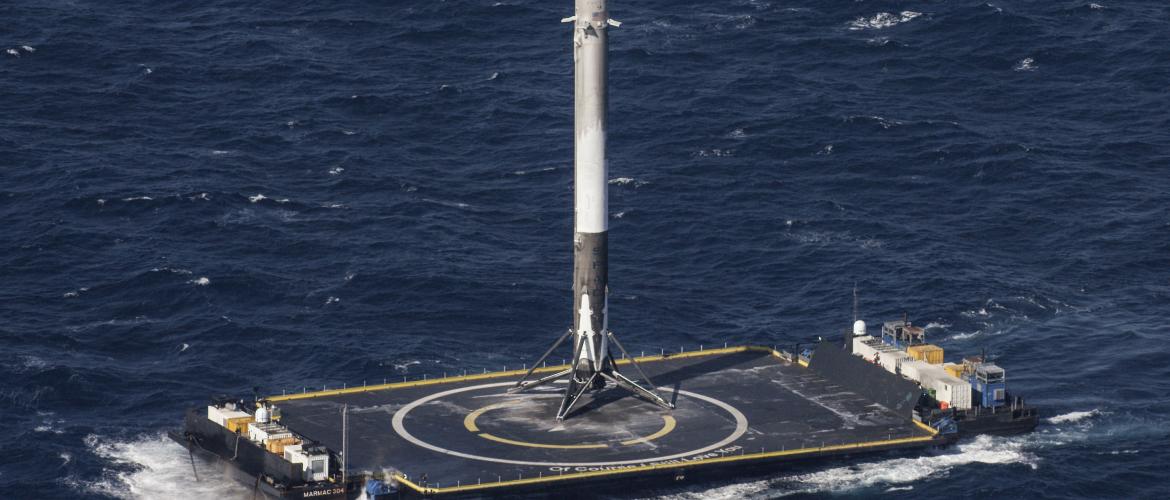Starlink: SpaceX’s broadband service
May 27, 2019 | Expert Insights

Background
SpaceX was the first privately funded company to launch, orbit, and recover a spacecraft successfully. It was certified for military launches in 2015. The company currently flies missions to the International Space Station under a cargo resupply contract with NASA. The company has proved itself a viable, commercial alternative to government-funded and operated space exploration projects. Its founder and CEO, Elon Musk, is widely known for his aspiration to reduce the cost of space travel and eventually colonise Mars.
In March 2018, the US Federal Communications Commission approved SpaceX’s application to allow the aerospace company to provide broadband services using satellites globally. The internet service is called Starlink.
Analysis
Space X recently launched the first batch of 60 small satellites into low-Earth orbit for the company’s new Starlink internet service. The satellites were released into orbit before the Falcon 9’s main-stage reusable booster rocket successfully landed on Earth. Each satellite weighs around 227 kilograms, thereby representing the heaviest payload delivered by SpaceX.
A SpaceX made Falcon 9 rocket launched after two back-to-back countdowns for the mission were cancelled. One was scrapped because of strong winds, while the other was postponed after technical glitches.
Although SpaceX said it would take a few days to ascertain whether the satellites were functioning as designed, the launch represents the initial phase of several Starlink satellites. These will be capable of beaming signals for high-speed internet from space to paying customers. The satellites orbit closer to Earth than other communications satellites, providing better coverage.
SpaceX has struggled to deliver a steady source of revenue as it seeks to sign government contracts. The Starlink venture serves as an essential revenue stream. Mr Musk says that the launch service income is expected to cap at around US$ 3 billion a year. Mr Musk plans to use the money to help pay for larger goals of spacecraft development to send paying customers to the Moon. This will provide a further revenue source for the colonisation of Mars.
Another 12 launches carrying similar payloads are required before Starlinks coverage encompasses the world. As of now, Starlink is only authorised for US operations. Analysts expect 2000 satellites to be launched per year, with the objective of eventually placing 12,000 in orbit.
Starlink faces considerable competition. Airbus-backed OneWeb launched its satellites in February. LeoSat Enterprises and Canada’s Telesat are also developing their capabilities.
Counterpoint
One potential concern is the sheer number of satellites in space. There are roughly 1800 satellites currently orbiting the Earth. Star link would more than double this amount and this is likely to cause Space junk, which is a serious issue.
Assessment
Our assessment is that the objective of entrepreneurs like Musk with big ideas is to rebuild the internet in space. We believe that with satellites in low orbit, it would take milli seconds to send a message across long distances, versus having to route the message through a satellite in geosynchronous orbit 22000 miles above the Earth. We feel that this would help in building markets outside of populated areas where critical infrastructure like the undersea does not really exist.
We believe that Internet access beamed down from space could drastically change the way we get online connectivity. Establishing quality high-speed satellite internet from low or medium earth orbit ( LEO and MEO, respectively ) would help more than 4 billion or so, who don’t currently have internet access.
We realise that the internet of Space ( IoS) is likely to become the backbone of the internet of things. We feel that with the proliferation of IoT devices, existing networks will become increasingly stressed and congested, particularly in remote and underserved regions in the world.
We also feel that the Starlink project simultaneously meets worldwide requirements for connectivity while providing a revenue stream for the cash-strapped company.








Comments